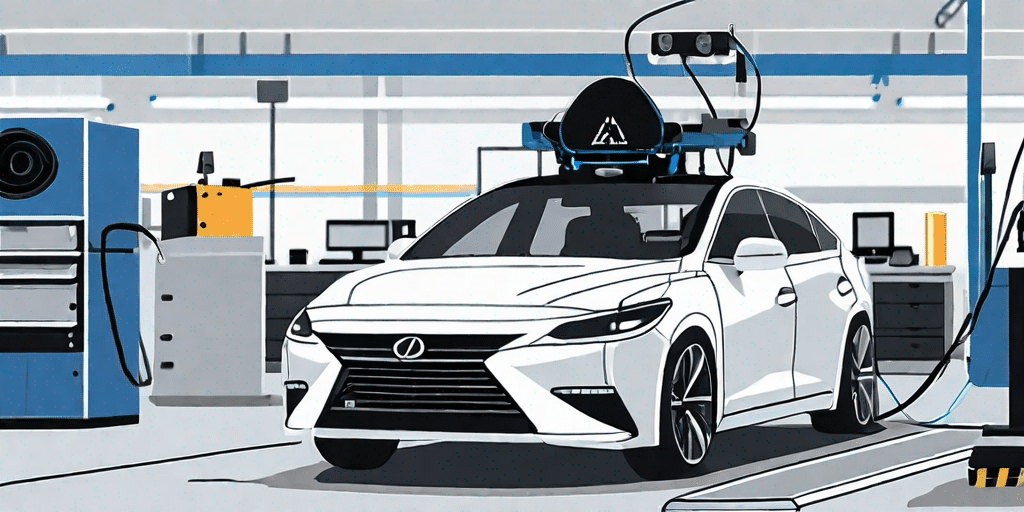In today’s modern vehicles, ADAS (Advanced Driver Assistance Systems) play a crucial role in enhancing safety and reducing the risks of accidents. One key component of ADAS is the camera system, which helps to detect and analyze the surrounding environment. However, for these cameras to function properly, regular calibration is essential.
Understanding ADAS Camera Calibration
ADAS camera calibration is a precise process that ensures the accuracy and reliability of the camera system’s measurements and calculations. It involves aligning the cameras to predefined specifications, enabling them to provide accurate information to the other ADAS components, such as lane departure warning, collision avoidance, and adaptive cruise control.
The Importance of ADAS Calibration
Proper calibration of the ADAS cameras is crucial for maintaining the integrity of the entire ADAS system. If the cameras are not calibrated correctly, they may misinterpret the surrounding conditions, leading to false information being relayed to the other ADAS components. This can result in compromised functionality and reduced safety on the road.
One of the key reasons why ADAS calibration is important is its impact on lane departure warning systems. These systems rely heavily on the accurate detection of lane markings by the ADAS cameras. If the cameras are not properly calibrated, they may fail to detect the lane markings correctly, resulting in inaccurate warnings or even no warnings at all. This can be extremely dangerous, as it may lead to unintentional lane departures and potential collisions.
Another crucial aspect of ADAS calibration is its effect on collision avoidance systems. These systems rely on the cameras’ ability to accurately detect pedestrians and vehicles in the vehicle’s path. If the cameras are not calibrated correctly, they may fail to detect these objects or provide inaccurate information about their position and distance. This can compromise the effectiveness of the collision avoidance system, putting the driver and other road users at risk.
The Role of Cameras in ADAS
ADAS cameras act as the vehicle’s eyes, constantly capturing and analyzing the road ahead. They detect lane markings, traffic signs, pedestrians, and vehicles, providing essential information for the ADAS system to make accurate decisions. Without properly calibrated cameras, the information received by the system may be unreliable, affecting its ability to respond appropriately to potential hazards.
One interesting aspect of ADAS cameras is their ability to detect and interpret traffic signs. These cameras are equipped with advanced image processing algorithms that can recognize various types of traffic signs, such as speed limit signs, stop signs, and yield signs. This information is then used by the ADAS system to provide the driver with relevant alerts or warnings. However, if the cameras are not calibrated correctly, they may fail to detect or misinterpret these signs, leading to incorrect information being relayed to the driver.
Furthermore, ADAS cameras play a crucial role in adaptive cruise control systems. These systems use the cameras to monitor the distance between the vehicle and the vehicle ahead, adjusting the speed accordingly to maintain a safe following distance. If the cameras are not properly calibrated, they may provide inaccurate distance measurements, leading to improper speed adjustments and potentially hazardous situations.
In conclusion, ADAS camera calibration is a vital process that ensures the accuracy and reliability of the camera system’s measurements and calculations. Proper calibration is essential for maintaining the integrity of the entire ADAS system and ensuring the safety of the driver and other road users. It allows the cameras to accurately detect lane markings, traffic signs, pedestrians, and vehicles, providing crucial information for the ADAS system to make accurate decisions. Without proper calibration, the ADAS system may not function effectively, compromising its ability to prevent accidents and enhance road safety.
The Calibration Process
ADAS camera calibration is a meticulous process that requires specific tools and equipment. It consists of several steps, including pre-calibration checks, calibration itself, and post-calibration checks.
Pre-Calibration Checks
Before starting the calibration process, it is important to ensure that the vehicle is in optimal condition. This includes inspecting the cameras for any physical damage and making sure that the mounting brackets are secure. Additionally, any necessary repairs or adjustments should be done before attempting calibration.
Calibration Tools and Equipment
Modern automotive service centers are equipped with specialized tools and equipment for ADAS camera calibration. These tools are designed to accurately position and align the cameras according to manufacturers’ specifications. They are essential for achieving precise calibration results.
Step-by-Step Calibration Procedure
The actual calibration process involves following a step-by-step procedure outlined by the vehicle manufacturer. This procedure typically includes aligning the vehicle on a level surface, positioning calibration targets at specific distances, and adjusting the cameras until they align perfectly with the targets. The process may vary depending on the vehicle make and model.
Safety Measures during Calibration
While performing ADAS camera calibration, it is important to prioritize safety. Proper precautions should be taken to minimize the risk of accidents or damage to the vehicle or calibration equipment.
Precautions to Take
During the calibration process, it is crucial to follow the manufacturer’s instructions and safety guidelines. These may include disconnecting the vehicle’s battery, ensuring proper grounding, and using the appropriate personal protective equipment. Adhering to these precautions helps to prevent accidents and ensures a safe working environment.
Potential Risks and How to Avoid Them
There are potential risks associated with ADAS camera calibration, such as electrical hazards, accidental vehicle movement, and damage to vehicle components. To mitigate these risks, it is essential to follow proper procedures, use reliable calibration equipment, and get trained professionals to perform the calibration. Regular maintenance and software updates are also necessary to minimize risks and ensure the system’s optimal performance.
Post-Calibration Checks and Maintenance
After completing the calibration process, it is crucial to perform post-calibration checks to verify the success and accuracy of the calibration. Additionally, regular maintenance is necessary to ensure the continued performance of the ADAS camera system.
Verifying Calibration Success
Once the calibration is complete, it is recommended to perform thorough tests to verify the accuracy of the camera system’s measurements. This may involve driving the vehicle under controlled conditions and comparing the camera system’s output with the actual road environment. If any discrepancies are found, adjustments or further calibration may be necessary.
Regular Maintenance for Optimal Performance
The ADAS camera system should be regularly inspected and maintained to keep it in optimal working condition. This includes cleaning the camera lenses, checking for signs of damage or debris obstruction, and ensuring that all camera components are securely mounted. Regular software updates from the vehicle manufacturer should also be installed to enhance the system’s performance and address any potential issues.
Frequently Asked Questions about ADAS Calibration
Here are some common questions related to ADAS camera calibration:
When Should Calibration Be Performed?
ADAS camera calibration should be performed in several situations, including after repairing or replacing the cameras, following any collision or damage to the vehicle, and as per the vehicle manufacturer’s recommended schedule. Additionally, if there are any abnormal system behaviors or error codes, calibration may be necessary to rectify the issue.
Can Calibration Be Done at Home?
ADAS camera calibration requires specialized tools, equipment, and technical knowledge. It is a complex process that is best performed by trained professionals in automotive service centers. DIY calibration attempts at home are not recommended as they may result in incorrect calibration or compromise the safety and functionality of the ADAS system.
In conclusion, ADAS camera calibration is a critical aspect of maintaining the safety and performance of the ADAS system. Proper calibration ensures accurate measurements and reliable functionality, allowing the system to effectively assist drivers in avoiding potential hazards. Regular calibration, post-calibration checks, and maintenance are essential to ensure optimal performance and maximize the safety benefits of ADAS technology.



